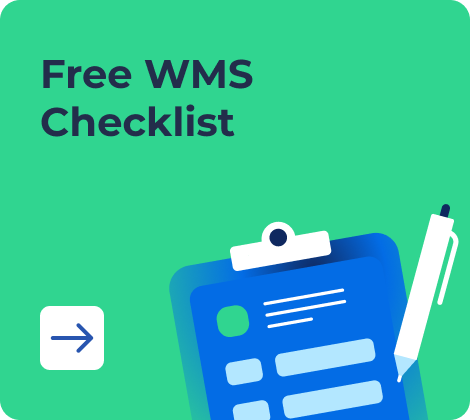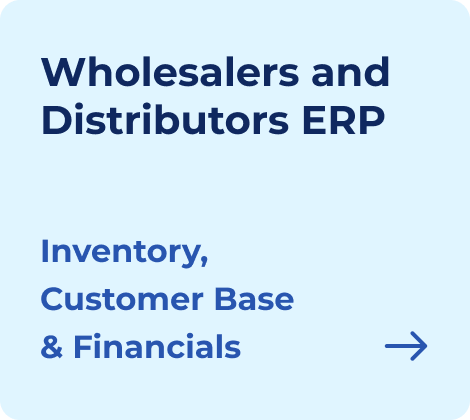Running a product-driven business means juggling orders, tracking vehicles, and checking stock all at once. It’s manageable when orders are slow, but as you grow, things can spiral fast.
One delay, and you’re dealing with angry customers and missed deliveries. Maybe an Excel sheet works for now, but what happens when demand spikes?
Logistics needs to scale. This is where logistics software helps by letting you track inventory, schedule orders, and manage shipping from one place. The result is fewer errors, happier customers, and better online reviews.
And don’t forget the competition. The global logistics automation market is expected to reach $70 billion by 2025, according to Grand View Research. That means your competitors are likely already using these tools. If you’re not, it’s time to start.
- What is Logistics Management Software?
- Key Features of Logistics Management Systems
- Benefits of Using Logistics Management Solutions
- Best Logistics Management Software in 2025
- How to Choose the Right Logistics Software for Your Business
- Real-World Use Cases and Industry Applications
- FAQs
- List of Resources
What is Logistics Management Software?
Logistics Management Software is a digital solution that helps businesses manage and optimize the movement of goods from the warehouse to the customer’s doorstep.
Transport delays, inventory stockouts, routing mix-ups, or outdated warehouse records all undermine customer trust. People want fast deliveries, crave consistent order updates, and expect products to arrive on the day promised (or even sooner).
With modern logistics management software, those demands can become a reality with a central place (a tool) that orchestrates an entire supply flow.
Note that the logistics management software differs from supply chain management software (SCM).
It’s because the SCM takes a broader view of operations — procurement, production, and distribution, whereas LMS focuses specifically on the flow of goods and services.
| Logistics Management Software | Supply Chain Management Software |
Primarily tracks goods and shipments |
Covers the entire supply chain (procurement, production, distribution) |
Focus on real-time tracking, route optimization, and delivery management |
Broader focus including sourcing, demand forecasting, and planning |
Designed for smaller, more focused operations |
Often used by larger organizations with more complex needs |
Key Features of Logistics Management Systems
Logistics management software coordinates the flow of goods. Brands that rely on a solid logistics management system can easily handle stock, orders, and delivery routes.
A reliable system shines by automating tasks, syncing data, and keeping everyone on the same page.
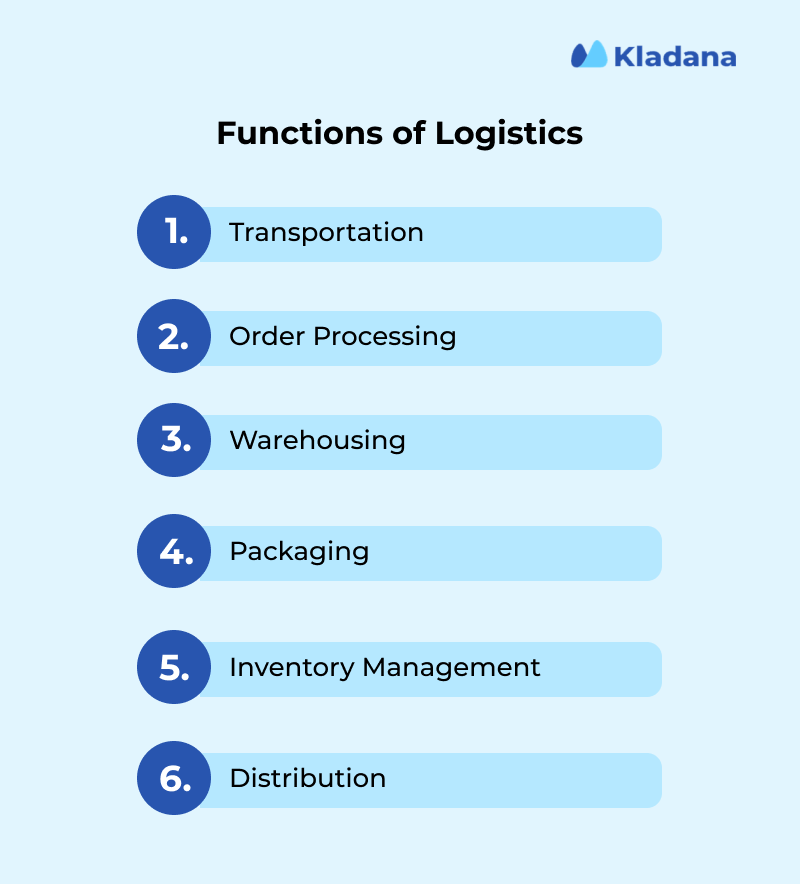
Inventory and Warehouse Management
One of the very powerful features is that it helps businesses keep track of inventory so that the stock levels remain accurate.
The inventory and management feature helps to:
- Track real-time stock levels so nobody sells something unavailable
- Automate reordering when levels dip below a threshold
- Reduce wasted hours spent searching for missing items in the warehouse
For brands struggling to integrate warehousing tasks into a single unified system can use Kladana’s warehousing solution. You get real-time stock monitoring and streamlined inbound/outbound workflows so staff never lose track of inventory location or direction.
Kladana Helps to Simplify and Optimize Your Warehouse Operations
Why choose our ERP solution:
✅ Multi-warehouse tracking — Monitor inventory across multiple locations, including raw materials and finished goods.
✅ Bin storage with IDs — Organize stock using zones and racks for faster picking and accurate storage.
✅ Barcode scanning — Automate inventory updates with barcode generation and scanning for products and locations.
✅ Inventory counts & adjustments — Conduct partial/full counts and resolve discrepancies in just a few clicks.
✅ Internal transfers — Move goods between warehouses seamlessly with clear documentation.
✅ Reorder point alerts — Get notified when stock runs low to avoid shortages.
✅ Real-time inventory reports — Access stock levels, movements, and average inventory days with up-to-date reports.
Get full control over your warehouse operations with Kladana. Start your 14-day free trial today. No credit card required!
Order Processing and Fulfillment
Don’t want the order to get lost in the shuffle?
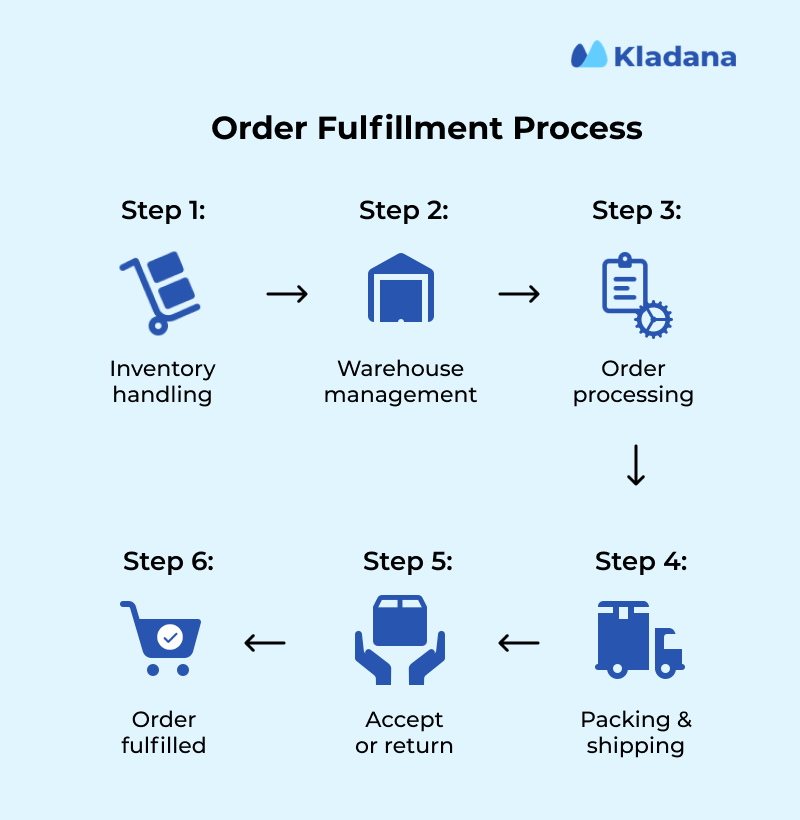
Then, use the logistics management software so that the order processing becomes a breeze with the feature extending its workability to:
- Convert new orders into fulfillment tasks without juggling multiple spreadsheets.
- Create shipping labels, packing slips, and other paperwork right away.
- Integrate with sales channels to keep orders flowing from the website to the warehouse.
Shipment Tracking
The logistics software helps check the package’s status to make it fully automated and visible.

It functions to:
- Send live updates on deliveries to businesses and buyers
- Reduce anxious calls from customers wondering where their packages went
- Pinpoint delays or routing issues early for proactive problem-solving
Route Optimization
You’re assured of efficient deliveries, lower fuel costs, and quicker service.

Because with the feature of route optimization, you can avail the following:
- Suggest better travel paths based on traffic or fuel costs
- Cuts down on wasted miles and late arrivals
- Helps drivers complete more deliveries in less time
Real-Time Data and Reporting
The real-time data in logistics allows you to make quick decisions.
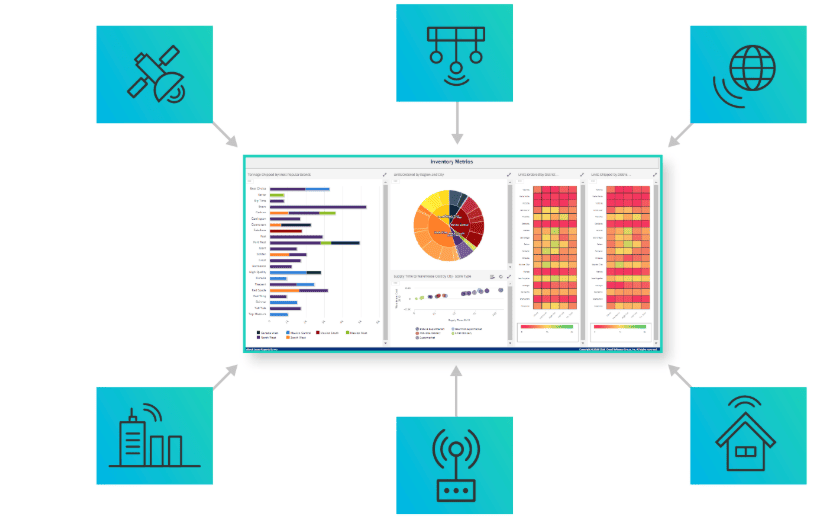
Also, you can adapt to changes in demand, as this feature offers the following:
- Putting operational metrics like freight costs or shipment times into clear dashboards
- Flagging bottlenecks before they turn into big problems
- Tying everything together so leaders see how each piece of the supply chain connects
Benefits of Using Logistics Management Solutions
At this point, you might be thinking, “That’s all great, but what does it mean for my business?”
Well, for businesses, adopting logistics management solutions relieves the issues caused by manual work, slower deliveries, and mounting errors.
Below are the key advantages of logistics management solutions that you can anticipate.
Faster Deliveries and Improved Customer Satisfaction
Shoppers demand speedier deliveries where they crave reliable updates and on-time arrivals. A logistics software automates route planning or real-time shipment since the tracking slashes delivery delays.
This means you’ll have happy customers who will become repeat buyers, and better delivery times will have a ripple effect on revenue.
Reduced Operational Costs
Manual data entry or repetitive tasks chew up payroll hours. Smart logistics management solutions eliminate that waste through automated order processing, inventory syncing, and route optimization.
Fewer miles traveled, fewer shipping mistakes, and tighter control over stock ultimately lead to savings that pile up month after month.
Minimized Human Errors and Better Visibility
Mixing up product quantities or mislabeling orders can crush profits.
A logistics management system reduces those errors with barcode scans, automated picking lists, and consistent updates across channels. The result is better visibility, with managers knowing the exact status of an incoming shipment or a truck on the road, which stops problems from spiraling.
Scalable for Business Growth
If you’re launching a new product line or expanding to multiple regions, logistics management software will support numerous warehouses and offer advanced analytics.
Adding more users or shipping destinations will not be a complex ordeal because the system is built to handle expansion.
Best Logistics Management Software in 2025
Businesses have no shortage of options when it comes to logistics management software. Grand View Research predicts that the logistics automation market will grow at a CAGR of 15%.
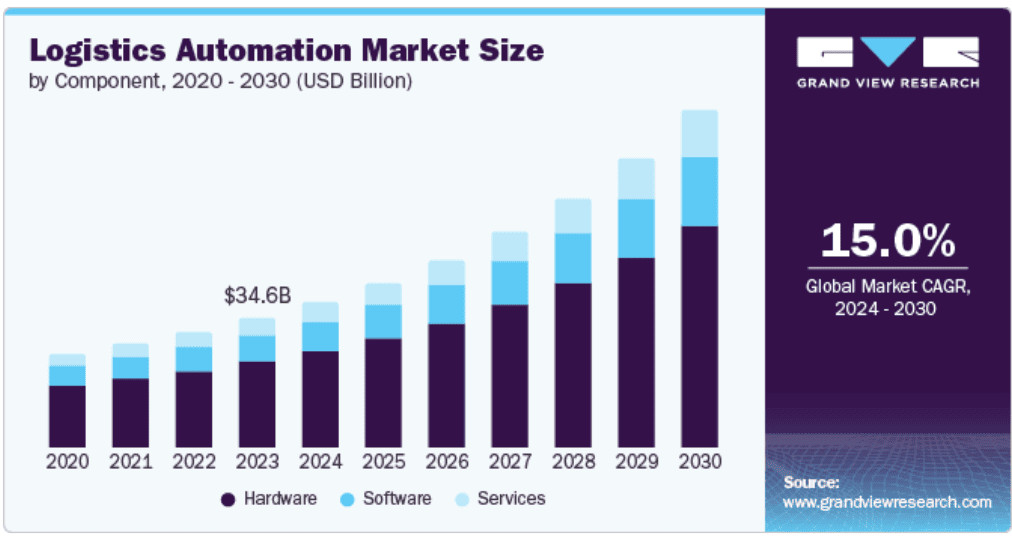
The market size highlights continued growth in digital logistics. Choosing a great logistics software feels like a big decision.
Four options stand out for different reasons:
1. Kladana
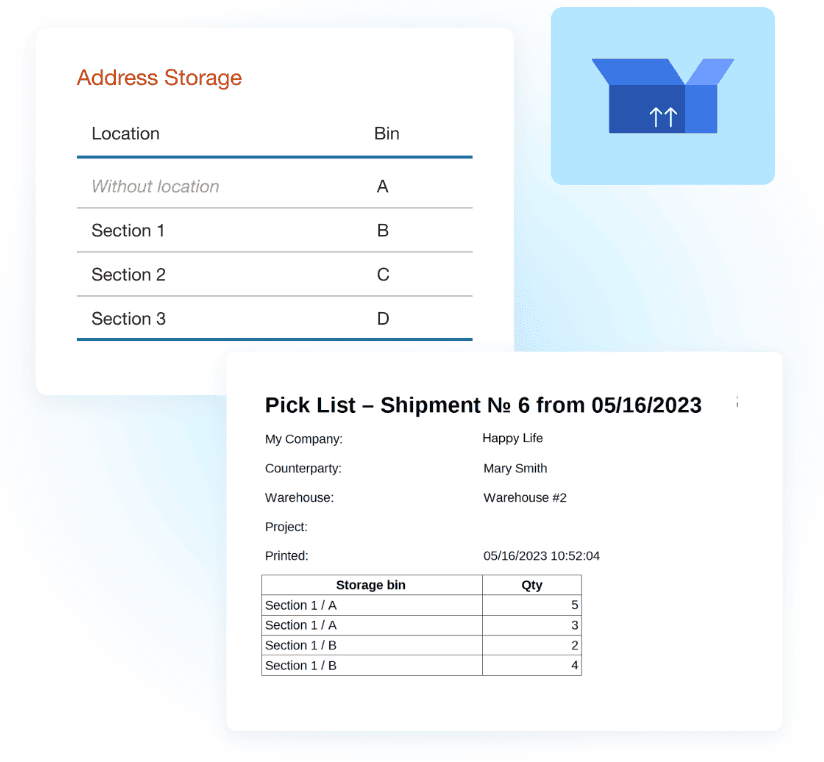
Kladana is an all-in-one logistics solution with powerful inventory management and shipping capabilities. Businesses choose it for its ability to provide complete supply chain visibility.
This one’s a popular logistics management tool for small-to-medium e-commerce shops and wholesalers.
Key Features
- Unified inventory oversight across multiple warehouses
- Route optimization tools for faster deliveries
- Automated order fulfillment and label generation
- Integrations with popular e-commerce platforms
Suitable for: Small to medium-sized businesses, particularly in e-commerce
Pricing: Flexible pricing depending on scale starting with $60 per year
2. Zoho Creator
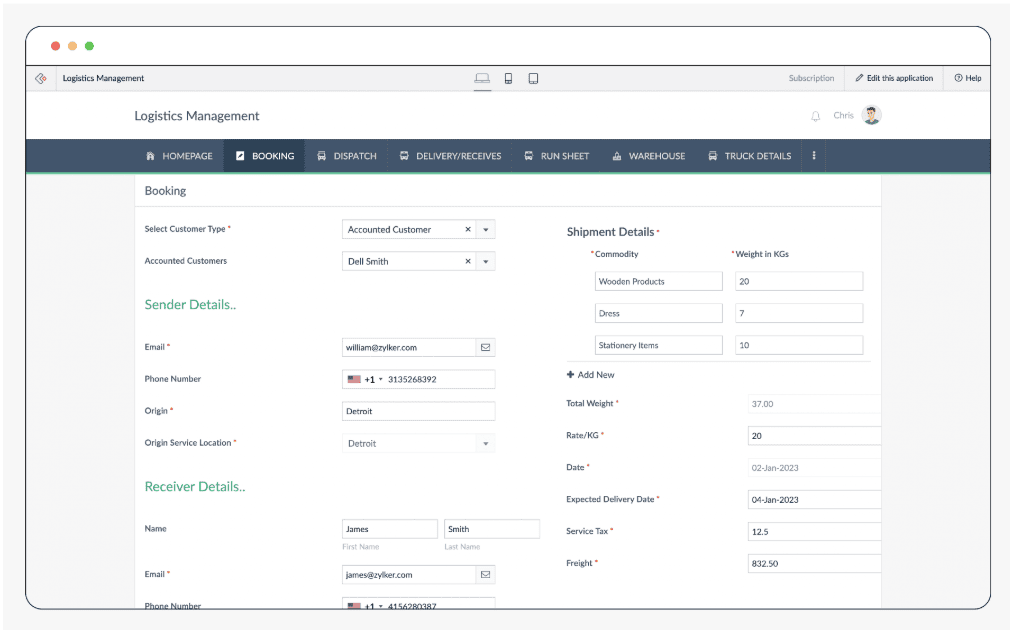
Zoho Creator suits smaller teams that crave customization, such as building workflows to their unique needs without overloading with code.
It’s an ideal match for businesses with unique workflows that mainstream systems don’t quite capture.
Key Features:
- Custom app builder for inventory tracking and order management
- A flexible interface that allows quick tweaks
- Connects seamlessly with other Zoho products
Best for: Businesses needing highly customizable solutions
Pricing: Starts at an affordable monthly subscription
3. ShipRocket
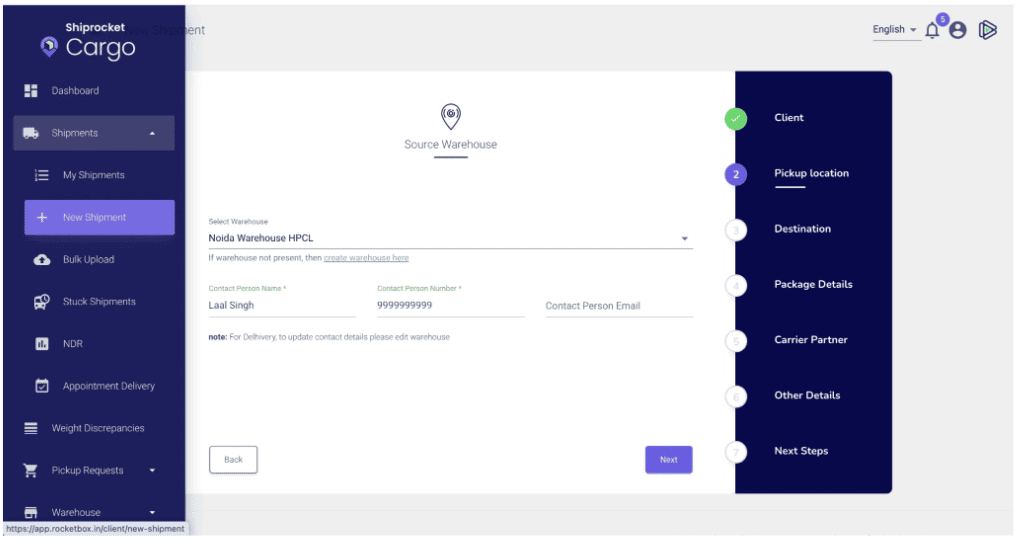
An essential platform for E-Commerce businesses looking to integrate shipping carriers and logistics solutions. You can ship multiple orders daily and simplify label creation and shipping rates by linking to popular platforms.
Key Features:
- Discounted shipping from various couriers
- Multi-channel order import for easy tracking
- Automatic label generation
Suitable for: E-commerce businesses looking to optimize shipping
Pricing: Subscription-based pricing with discounts on shipping
4. Logiwa
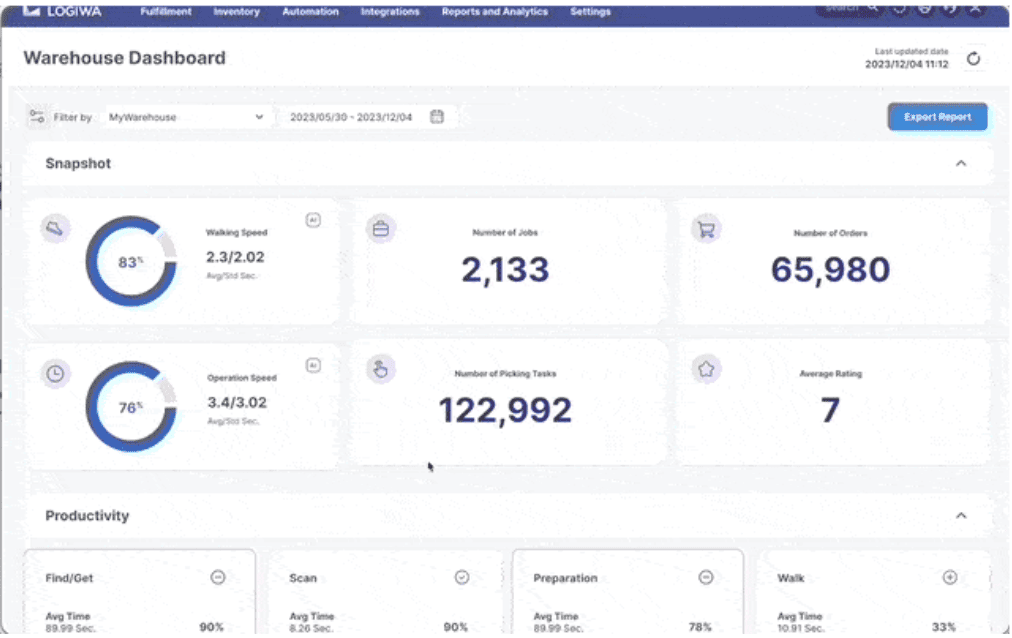
Logiwa shines in warehouse management and order fulfillment because it is designed for quick-paced warehouses and fulfillment centers that juggle high volumes.
Businesses choose it for its real-time inventory visibility and quick order fulfillment since it can automate inventory control, track shipments, and increase warehouse efficiency.
Key Features:
- Automated picking and packing workflows
- Built-in warehouse management modules
- Straightforward scaling for 3PL providers
Suitable for: 3PL providers, warehouses, manufacturers
Pricing: Mid-range pricing
Industries served: Logistics, e-commerce, 3PL, retail
Organizations with a focus on wholesale and large-scale distribution can explore Kladana’s specialized solution. You can use it to coordinate multi-location stock management, advanced shipment schedules, and bulk order processing without constant manual oversight.
| Software | Ease of Use | Integrations | Pricing | Industries Served |
Kladana |
User-friendly |
Good (CRM, shipping carriers) |
Affordable |
Retail, e‑commerce, wholesalers |
Zoho Creator |
Flexible, customizable |
High (with CRM, ERP) |
Low-cost |
Manufacturing, logistics, retail |
ShipRocket |
Easy-to-use |
Excellent (shipping carriers, platforms) |
Moderate |
E‑commerce, retail |
Logiwa |
Moderate |
Good (ERP, shipping) |
Mid-range |
3PL, e‑commerce, logistics |
How to Choose the Right Logistics Software for Your Business
Choosing the right logistics management software can be daunting, especially with many available options.
However, getting the right fit can make or break your logistics operation. It can improve shipping operations and transform them from chaotic to smooth.
Here’s a structured approach that you can take.
Gauge Business Needs and Logistics Challenges
Different operations have different struggles. Pin down whether slow shipping, inventory mishaps, or outdated systems cause the most trouble.
Start speaking with warehouse managers, fulfillment teams, and customer service reps to discover bottlenecks.
Like, drivers stuck on inefficient routes or call centers flooded with “Where’s my package?” inquiries.
Use their feedback and list the must-haves that address those concerns.
Consider these factors:
- Order volume: How many orders are you processing daily? Are you expanding into new markets?
- Logistics pain points: Are you struggling with delayed shipments, poor route planning, or visibility into inventory?
- Scalability needs: Will the software grow with your business as you scale up?
Must-Have Features for Your Operations
A few standard inclusions are almost non-negotiable. Route optimization stands out for those needing speedy deliveries. And then there’s real-time tracking to prevent guesswork about parcel whereabouts.
Building a quick checklist keeps selection focused on those must-have features. Think of the following aspects:
- Route optimization: Save time and money by finding the most efficient delivery routes.
- Real-time tracking: Track shipments and orders in real-time to keep customers in the loop.
- Inventory management: Keep tabs on stock levels across multiple warehouses to avoid stockouts.
- Integration capabilities: Make sure the software integrates smoothly with your existing tools (CRM, ERP, etc.).
SaaS vs. On-Premise Solutions
Businesses can choose between different types of ERP — a cloud-hosted (SaaS) option or an on-site (on-premise) setup. SaaS solutions spare a lot of upfront tech investment, which suits new or mid-sized shops. These systems typically run on subscription models.
On-premise software requires servers and in-house IT teams but can appeal to companies that demand tighter control.
Here’s a quick comparison to help you make the right choice.
| Aspect | SaaS | On-Premise |
Setup |
Minimal hardware; quick start |
Heavy initial investment in servers and licenses |
Maintenance |
Vendor handles updates and patches |
Internal team updates and maintains software |
Scalability |
Easier to expand user counts or capacity |
More complex to add servers or software modules |
Cost Structure |
Ongoing subscription model |
High upfront cost but fewer monthly fees |
Real-Life Example |
Tools like ShipRocket and Kladana often run in the cloud |
Larger enterprises might adopt SAP on local servers |
Real-World Use Cases and Industry Applications
Logistics management solutions power everything from small online boutiques to global manufacturing hubs. Every industry has its take on why and how a logistics management software reaps rewards.
Below, we’re highlighting industries that use logistics management software.
E-Commerce
E-commerce shops thrive or falter based on shipping speed and accuracy. Late deliveries or “out of stock” mistakes ruin trust. A logistics management system updates inventory across marketplaces, schedules pickups with carriers, and provides real-time order updates to shoppers.
Volume spikes during holiday sales become less stressful with an automated setup that prints labels and picks routes on the fly.
Retail
Store chains with both online and offline presence juggle many stock points. Nobody wants a disappointed customer leaving an empty-handed store. Logistics management software keeps inventory counts synced across all outlets.
Store staff check system data before promising an item is in stock. Managers monitor shipments from distribution centers, preventing bottlenecks.
FMCG
Fast-moving consumer goods move at lightning speed. Bottling plants, distribution centers, and retailers coordinate to keep shelves full. A logistics management system tracks product batches, documents shelf life, and flags routes that delay fresh arrivals.
That extra level of control allows companies to avoid expired stock or wasted shipping costs.
3PL
Third-party logistics providers serve multiple clients at once, each with its own shipping rules. A robust logistics software helps 3PLs handle different product categories, carriers, or brand-specific packing instructions.
Central dashboards simplify the scheduling of pickups and drop-offs across many warehouses. Transparent tracking means each client sees real-time updates on orders, cutting down on phone calls and confusion.
Manufacturing
Factories rely on raw materials arriving on time so production lines never stall. Finished goods also need swift movement to distributors or consumers.
A logistics management solution helps coordinate inbound freight while scheduling outbound shipments. That synergy reduces storage costs, keeps lines running smoothly, and shortens the wait for customers to expect the final product.
FAQs
Let’s address some of the common questions around the logistics management software.
What is the best logistics management software?
It depends on your specific business needs. Some of the top contenders include Kladana, Zoho Creator, and ShipRocket. Each one caters to different business types and scales, so you’ll need to assess your specific logistics challenges.
What’s the difference between TMS and logistics management software?
A Transportation Management System (TMS) focuses specifically on transportation functions like route planning, freight management, and tracking.
Can small businesses use logistics software?
Absolutely! Small businesses can benefit from logistics software since it offers better transparency on deliveries, faster shipping times, and fewer out-of-stock issues. Customers trust a brand that consistently delivers on promises.
Does software for logistics management handle international shipping?
Many solutions help with multi-currency billing, customs paperwork, and international freight quoting. Global shipping gets complicated, but the right system can streamline it.
Is logistics software expensive?
Pricing varies. SaaS solutions often offer affordable, scalable pricing models, while enterprise-level solutions like SAP can be more costly. Always consider your budget and the features you need.
How can logistics software shape brand reputation?
Shoppers value on-time delivery and order updates. A brand with a reputation for reliability stands apart, and word-of-mouth buzz leads to repeat business.
Can logistics software handle international shipping?
Yes, many logistics management systems can handle international shipping, including tracking, customs management, and multi-country route optimization.
Can I track inventory in real-time?
Of course! Most logistics management software, including platforms like Zeo and ShipRocket, offers real-time inventory tracking.
Can logistics software improve delivery speed?
Yes, logistics software speeds up deliveries and ensures products reach customers faster by optimizing routes and automating fulfillment processes.
Does logistics software help with forecasting?
Yes, some logistics platforms offer demand forecasting tools to predict stock needs and avoid stockouts or overstocking.
List of Resources
Grand View Research — Logistics Automation Market Size, Share & Trends Analysis Report
Read‑alikes
Understanding Inventory Management in Manufacturing: Challenges, Strategies, Practices, and Trends
Inventory Management in Excel: Free Template and a Step‑by‑Step Guide
Delivery Challan Format and Templates for Excel
Production Tracking: Monitoring Your Manufacturing Progress in Real-Time
